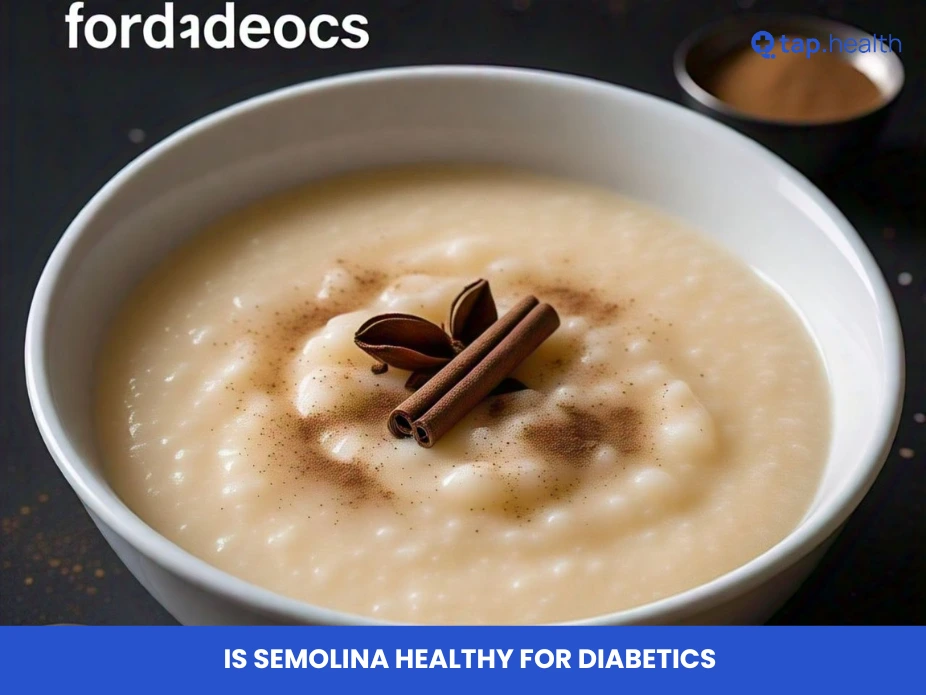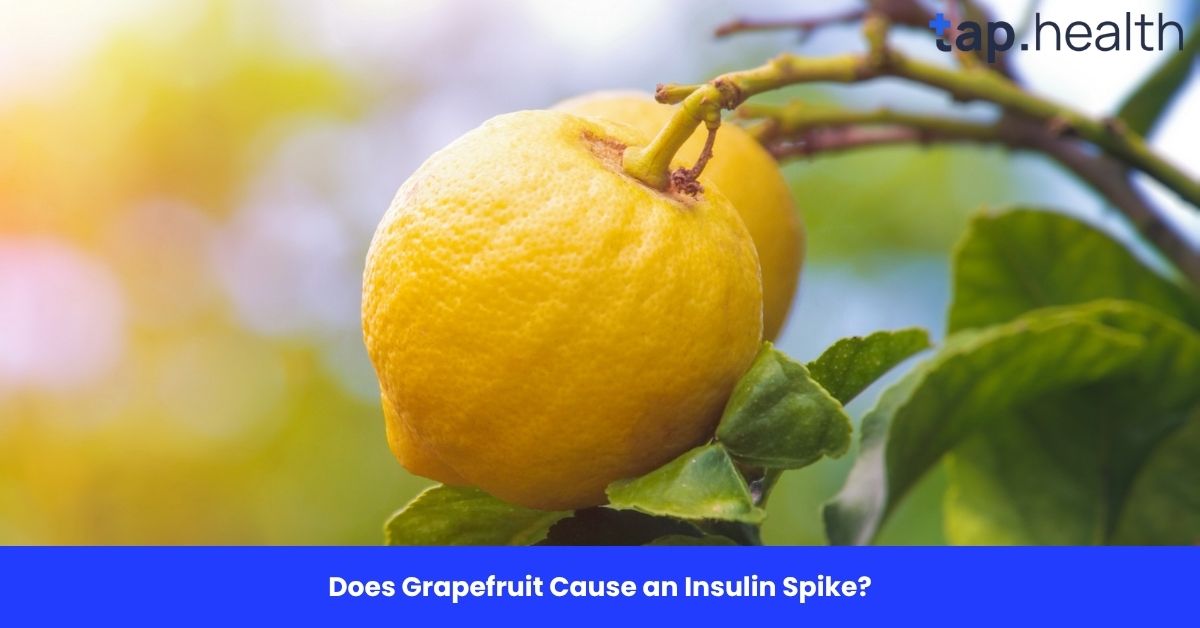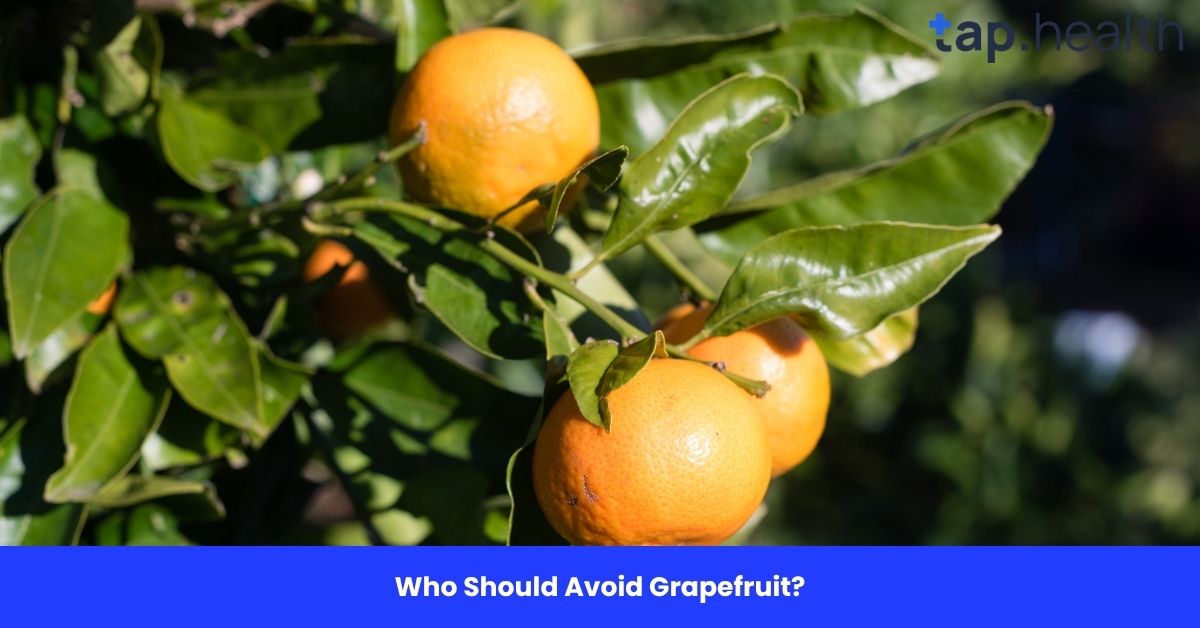Managing diabetes effectively involves making informed dietary choices. One common question among diabetics is, “Is semolina healthy for diabetics?” This comprehensive guide explores the nutritional aspects of semolina, its impact on blood sugar levels, and how it can fit into a diabetic-friendly diet. We’ll delve into the benefits and potential drawbacks of including semolina in your meals, providing practical tips and answering frequently asked questions to help you make the best dietary decisions for your health.
What is Semolina?
Semolina is a coarse flour made from durum wheat, a hard variety of wheat. It’s commonly used in various cuisines around the world to make dishes like pasta, couscous, and desserts such as pudding. In Indian cuisine, semolina, known as “suji” or “rava,” is a staple ingredient used in breakfast items like upma, idli, and various sweets.
Key Points:
- Made from durum wheat.
- Coarse texture.
- Versatile in both savory and sweet dishes.
Is Semolina Healthy for Diabetics?
Is semolina healthy for diabetics? This is a common query among individuals managing diabetes. The answer isn’t straightforward as it depends on how semolina is consumed, portion sizes, and overall dietary balance. Semolina is high in carbohydrates, which are essential for energy but can affect blood sugar levels if not managed properly. However, when incorporated thoughtfully into a diabetic diet, semolina can be part of a healthy meal plan.
Key Considerations:
- Glycemic Index (GI): Semolina has a medium to high GI, which means it can cause a rapid increase in blood sugar levels.
- Portion Control: Managing the quantity of semolina consumed is essential to prevent spikes in blood sugar.
- Nutrient Density: While high in carbs, semolina also provides essential nutrients that can benefit overall health.
- Combination with Other Nutrients: Pairing semolina with proteins and healthy fats can help moderate blood sugar levels.
Understanding these factors can help diabetics decide how to include semolina in their diet without compromising their blood sugar control.
Nutritional Profile of Semolina
Understanding the nutritional content of semolina is crucial for diabetics looking to manage their blood sugar levels effectively.
| Nutrient | Amount per 100g |
|---|---|
| Calories | 360 kcal |
| Carbohydrates | 73 g |
| Protein | 12 g |
| Fat | 1.5 g |
| Dietary Fiber | 3.9 g |
| Iron | 1.5 mg |
| Magnesium | 114 mg |
| Phosphorus | 270 mg |
| Potassium | 260 mg |
| Vitamin B1 (Thiamine) | 0.4 mg |
Highlights:
- High in Carbohydrates: Provides sustained energy but requires careful portion management.
- Moderate Protein Content: Supports muscle maintenance.
- Low in Fat: Makes it a suitable option for low-fat diets.
- Dietary Fiber: Aids in digestion and helps in stabilizing blood sugar levels.
- Essential Minerals: Rich in magnesium and phosphorus, supporting various bodily functions.
Semolina and Diabetes
Diabetes is a condition characterized by high blood sugar levels. Managing carbohydrate intake is vital for maintaining stable blood glucose levels. Semolina, being rich in carbohydrates, plays a significant role in the diabetic diet.
Key Points:
- Carbohydrate Content: Semolina is predominantly composed of carbohydrates, which directly impact blood sugar levels.
- Glycemic Index: With a GI ranging from medium to high (around 70), semolina can cause rapid increases in blood sugar.
- Insulin Response: High-GI foods like semolina may require higher insulin doses for those on insulin therapy.
- Portion Control: Eating smaller portions can help mitigate the blood sugar spike associated with semolina consumption.
Impact on Blood Sugar Levels:
When consumed, semolina breaks down into glucose, entering the bloodstream and raising blood sugar levels. For diabetics, this necessitates balancing semolina intake with other nutrients to prevent adverse effects on blood glucose control.
Benefits of Semolina for Diabetics
Despite its high carbohydrate content, semolina offers several benefits that can be advantageous for individuals managing diabetes when consumed in moderation.
1. Energy Boost
Semolina is an excellent source of energy due to its high carbohydrate content. This can help in maintaining energy levels throughout the day, especially when paired with proteins and healthy fats.
2. Rich in Nutrients
Semolina contains essential vitamins and minerals like magnesium, which aids in glucose metabolism, and phosphorus, which is important for bone health. These nutrients are vital for overall health and can support the body’s functions in managing diabetes.
3. Digestive Health
With a good amount of dietary fiber, semolina can help improve digestive health by preventing constipation, a common issue in diabetics. Fiber also slows down the absorption of sugar, aiding in better blood sugar control.
4. Versatility in Diet
Semolina can be incorporated into various dishes, making it easier to include in a balanced diet. Its adaptability allows for creative meal planning that can meet nutritional needs without monotony.
5. Low in Fat
Semolina is naturally low in fat, which makes it suitable for low-fat diets often recommended for diabetics to manage weight and cardiovascular health.
6. Protein Content
With moderate protein levels, semolina supports muscle maintenance and repair, which is important for overall health and metabolism.
Potential Drawbacks of Semolina for Diabetics
While semolina has its benefits, there are potential drawbacks that diabetics should be aware of.
1. High Glycemic Index
The medium to high GI of semolina can lead to rapid spikes in blood sugar levels, making it crucial for diabetics to consume it in controlled portions. High-GI foods can cause insulin resistance over time, complicating diabetes management.
2. Caloric Density
Semolina is calorie-dense, which can contribute to weight gain if not consumed in moderation. Maintaining a healthy weight is essential for managing diabetes and reducing the risk of complications.
3. Lack of Complete Protein
While semolina contains protein, it lacks certain essential amino acids, making it an incomplete protein source. Combining it with other protein-rich foods can help balance this deficiency and ensure adequate protein intake.
4. Possible Gluten Content
Semolina contains gluten, which can be problematic for individuals with celiac disease or gluten sensitivity, often seen in conjunction with type 1 diabetes. For those with gluten intolerance, consuming semolina can lead to adverse health effects.
5. Potential Impact on Cholesterol Levels
Some studies suggest that high consumption of refined grains, including semolina, may be linked to increased cholesterol levels. However, choosing whole semolina varieties can help mitigate this risk.
How to Incorporate Semolina into a Diabetic Diet
Incorporating semolina into a diabetic diet requires careful planning and portion control. Here are some tips to enjoy semolina without compromising blood sugar levels.
1. Portion Control
Limit semolina servings to small portions. For example, using 1/4 to 1/2 cup of semolina in recipes can help manage carbohydrate intake. Measuring portions helps prevent overconsumption and helps maintain stable blood sugar levels.
2. Combine with Protein and Fiber
Pair semolina with protein-rich foods like legumes, lean meats, or dairy products and fiber-rich vegetables to slow down the absorption of carbohydrates and stabilize blood sugar levels. For instance, adding paneer or tofu to semolina dishes can enhance their nutritional profile.
3. Opt for Whole Semolina
Choose whole semolina varieties over refined ones. Whole semolina retains more fiber and nutrients, which can help in better blood sugar control. Whole grains have a lower glycemic response compared to their refined counterparts.
4. Balance Meals
Ensure that meals containing semolina are balanced with other food groups. For example, serving semolina-based upma with a side of vegetable curry and a fresh salad can create a balanced meal that supports overall health.
5. Monitor Blood Sugar Levels
Regularly monitor your blood sugar levels to understand how semolina affects you personally
6. Cooking Methods
Opt for cooking methods that retain the nutritional value of semolina. Avoid deep-frying semolina-based dishes and instead, prefer steaming, grilling, or baking to keep the calorie content low and preserve nutrients.
7. Incorporate Healthy Fats
Adding sources of healthy fats, such as olive oil or avocado, can help slow down the digestion of semolina and reduce the glycemic impact. For instance, drizzling a small amount of olive oil over a semolina salad can enhance its flavor and nutritional benefits.
8. Choose Low-Glycemic Alternatives
Consider using low-GI alternatives or combining semolina with ingredients that lower the overall glycemic index of the meal. Adding vegetables like spinach or broccoli to semolina dishes can increase fiber content and reduce the meal’s overall GI.
Semolina Recipes Suitable for Diabetics
Here are some diabetic-friendly semolina recipes that are both delicious and nutritious. These recipes incorporate semolina in ways that help manage blood sugar levels effectively.
1. Vegetable Upma
Ingredients:
- 1 cup semolina (rava)
- 2 tbsp oil
- 1 tsp mustard seeds
- 1 tsp cumin seeds
- 1 onion, chopped
- 1 carrot, diced
- 1/2 cup peas
- 2 green chilies, slit
- 1-inch ginger, grated
- A few curry leaves
- Salt to taste
- Fresh coriander, chopped
- Juice of half a lemon
Preparation:
- Dry roast semolina until lightly golden and set aside.
- Heat oil in a pan, add mustard seeds and cumin seeds until they splutter.
- Add curry leaves, green chilies, and grated ginger.
- Sauté onions until translucent.
- Add diced carrots and peas, cook until vegetables are tender.
- Add 2 cups of water and salt. Bring to a boil.
- Gradually add roasted semolina, stirring continuously to prevent lumps.
- Cook until the water is absorbed and the upma is fluffy.
- Garnish with fresh coriander and lemon juice. Serve hot.
Benefits:
- High in fiber and vitamins.
- Balanced with proteins and complex carbs.
- Low in fat when prepared with minimal oil.
2. Semolina and Vegetable Salad
Ingredients:
- 1 cup cooked semolina
- 1 cucumber, diced
- 1 tomato, diced
- 1 bell pepper, diced
- 1/4 cup chopped red onion
- 2 tbsp olive oil
- Juice of one lemon
- Salt and pepper to taste
- Fresh herbs (parsley or cilantro), chopped
Preparation:
- Cook semolina as per package instructions, let it cool.
- In a large bowl, combine cooked semolina, cucumber, tomato, bell pepper, and red onion.
- In a small bowl, whisk together olive oil, lemon juice, salt, and pepper.
- Pour the dressing over the salad and mix well.
- Garnish with fresh herbs and serve chilled.
Benefits:
- High in protein and fiber.
- Rich in vitamins and minerals.
- Provides a balanced meal with healthy fats.
3. Semolina Porridge with Nuts
Ingredients:
- 1/2 cup semolina
- 3 cups milk (can use low-fat or plant-based milk)
- 1 tbsp honey or a sugar substitute
- 1/4 tsp cinnamon powder
- A handful of mixed nuts (almonds, walnuts)
- Fresh berries for garnish
Preparation:
- Heat milk in a saucepan over medium heat.
- Add semolina gradually, stirring continuously to prevent lumps.
- Cook until the mixture thickens.
- Add honey and cinnamon powder, mix well.
- Serve hot, topped with mixed nuts and fresh berries.
Benefits:
- High in fiber and omega-3 fatty acids.
- Rich in protein and essential nutrients.
- Provides sustained energy and satiety.
4. Vegetable and Tofu Stir-Fry with Semolina
Ingredients:
- 1 cup semolina
- 200g tofu, cubed
- 1 bell pepper, sliced
- 1 zucchini, sliced
- 1 carrot, julienned
- 2 tbsp soy sauce (low sodium)
- 1 tbsp olive oil
- 1 tsp sesame oil
- 1 garlic clove, minced
- 1-inch ginger, grated
- Salt and pepper to taste
- Sesame seeds for garnish
Preparation:
- Cook semolina as per package instructions and set aside.
- Heat olive oil in a pan, add minced garlic and grated ginger, sauté until fragrant.
- Add tofu cubes and cook until golden brown.
- Add bell pepper, zucchini, and carrot. Stir-fry until vegetables are tender.
- Pour in soy sauce and sesame oil, mix well.
- Combine the cooked semolina with the stir-fried vegetables and tofu.
- Season with salt and pepper to taste.
- Garnish with sesame seeds and serve hot.
Benefits:
- High in protein from tofu.
- Rich in vitamins and minerals from vegetables.
- Low in fat and suitable for blood sugar management.
General Tips for a Hypothyroid-Friendly Diet
Adopting healthy eating habits can enhance the effectiveness of your diet plan. Here are some essential tips to incorporate into your daily routine:
1. Stay Hydrated
- Why It Matters: Proper hydration supports metabolism, digestion, and overall cellular function.
- How to Implement:
- Drink at least 8-10 glasses of water daily.
- Carry a reusable water bottle to remind yourself to drink throughout the day.
- Incorporate herbal teas and infused water (like lemon or cucumber) for variety.
2. Regular Meals
- Why It Matters: Eating balanced meals at regular intervals helps maintain energy levels and prevents overeating.
- How to Implement:
- Aim for three main meals and two healthy snacks each day.
- Avoid skipping meals, especially breakfast, to stabilize blood sugar levels.
3. Mindful Eating
- Why It Matters: Paying attention to hunger and fullness cues helps prevent overeating and promotes better digestion.
- How to Implement:
- Eat slowly and savor each bite.
- Avoid distractions like TV or smartphones during meals.
- Listen to your body’s hunger signals and stop eating when you’re comfortably full.
4. Balanced Macronutrients
- Why It Matters: Ensures that each meal provides a balance of proteins, carbohydrates, and healthy fats.
- How to Implement:
- Include a source of lean protein, complex carbohydrates, and healthy fats in every meal.
- Use whole grains, lean meats, legumes, and healthy oils to achieve balance.
5. Limit Goitrogens
- Why It Matters: Goitrogens are substances that can interfere with thyroid hormone production.
- How to Implement:
- Consume goitrogenic foods like cruciferous vegetables in moderation.
- Cooking these vegetables can reduce their goitrogenic effect, making them safer to consume.
- Avoid consuming large amounts of soy and raw cruciferous vegetables.
6. Consult a Dietitian
- Why It Matters: Personalized advice ensures that your diet meets your specific health needs and supports thyroid function effectively.
- How to Implement:
- Seek professional guidance to create a tailored meal plan.
- Discuss any dietary restrictions or preferences with your dietitian.
- Regularly review and adjust your diet plan based on progress and health status.
7. Exercise Regularly
- Why It Matters: Physical activity helps boost metabolism, manage weight, and improve insulin sensitivity, which is crucial for diabetics.
- How to Implement:
- Incorporate at least 30 minutes of moderate exercise most days of the week.
- Choose activities you enjoy, such as walking, swimming, or yoga.
- Combine aerobic exercises with strength training for optimal benefits.
8. Manage Stress
- Why It Matters: Chronic stress can affect blood sugar levels and overall thyroid function.
- How to Implement:
- Practice relaxation techniques like deep breathing, meditation, or mindfulness.
- Ensure adequate sleep each night to help your body recover and manage stress.
- Engage in hobbies and activities that bring you joy and relaxation.
Frequently Asked Questions (FAQ) on Is semolina healthy for diabetics?
1. Is semolina high in carbohydrates?
Yes, semolina is high in carbohydrates. It contains approximately 73 grams of carbs per 100 grams, making it essential for diabetics to consume it in controlled portions.
2. Can diabetics include semolina in their diet?
Yes, diabetics can include semolina in their diet by managing portion sizes, combining it with protein and fiber-rich foods, and opting for whole semolina varieties.
3. What is the glycemic index of semolina?
Semolina has a medium to high glycemic index (GI) of around 70, which means it can cause a rapid increase in blood sugar levels. It’s important to consume it in moderation and balance it with other nutrients.
4. Are there low-GI alternatives to semolina?
Yes, low-GI alternatives include whole grains like barley, quinoa, and bulgur, which have a slower impact on blood sugar levels compared to semolina.
5. How can I reduce the glycemic impact of semolina?
To reduce the glycemic impact, pair semolina with protein and fiber-rich foods, use smaller portions, and opt for whole semolina varieties. Cooking methods that increase fiber content can also help.
6. Is whole semolina better for diabetics than refined semolina?
Yes, whole semolina retains more fiber and nutrients, which can help in better blood sugar control compared to refined semolina.
7. Can semolina help in weight management for diabetics?
Semolina can be part of a weight management plan when consumed in controlled portions and balanced with other low-calorie, nutrient-dense foods.
8. Is semolina suitable for both Type 1 and Type 2 diabetes?
Yes, semolina can be included in the diet of both Type 1 and Type 2 diabetics with proper portion control and dietary balance.
9. Are there any specific semolina dishes recommended for diabetics?
Vegetable upma, semolina salads, and semolina porridge with nuts are some diabetic-friendly semolina dishes that are nutritious and balanced.
10. Should diabetics avoid semolina altogether?
No, diabetics do not need to avoid semolina altogether but should consume it in moderation and as part of a balanced diet to manage blood sugar levels effectively.
11. Does semolina contain fiber?
Yes, semolina contains dietary fiber, approximately 3.9 grams per 100 grams, which aids in digestion and helps stabilize blood sugar levels.
12. Can semolina be part of a gluten-free diet?
No, semolina contains gluten as it is made from durum wheat. Individuals with celiac disease or gluten sensitivity should avoid semolina or seek gluten-free alternatives.
13. How does semolina affect cholesterol levels?
Some studies suggest that high consumption of refined grains like semolina may be linked to increased cholesterol levels. However, choosing whole semolina varieties can help mitigate this risk due to higher fiber content.
14. Is semolina suitable for vegetarians?
Yes, semolina is suitable for vegetarians as it is plant-based and can be incorporated into various vegetarian dishes.
15. Can semolina be used as a breakfast food for diabetics?
Yes, semolina can be used as a breakfast food for diabetics by preparing dishes like vegetable upma or semolina porridge with nuts, which provide a balanced mix of carbohydrates, proteins, and healthy fats.
Conclusion
Semolina can be a healthy addition to a diabetic diet when consumed thoughtfully and in moderation. Its rich carbohydrate content provides essential energy, while its nutrient profile offers various health benefits. By pairing semolina with protein and fiber-rich foods, opting for whole semolina varieties, and practicing portion control, diabetics can enjoy semolina without adversely affecting their blood sugar levels. Always consult with a healthcare professional or dietitian to tailor your diet plan to your specific needs and ensure optimal management of your diabetes.
Start incorporating semolina into your diabetic diet today with these healthy and delicious recipes, and take a step towards better blood sugar control and overall well-being!



